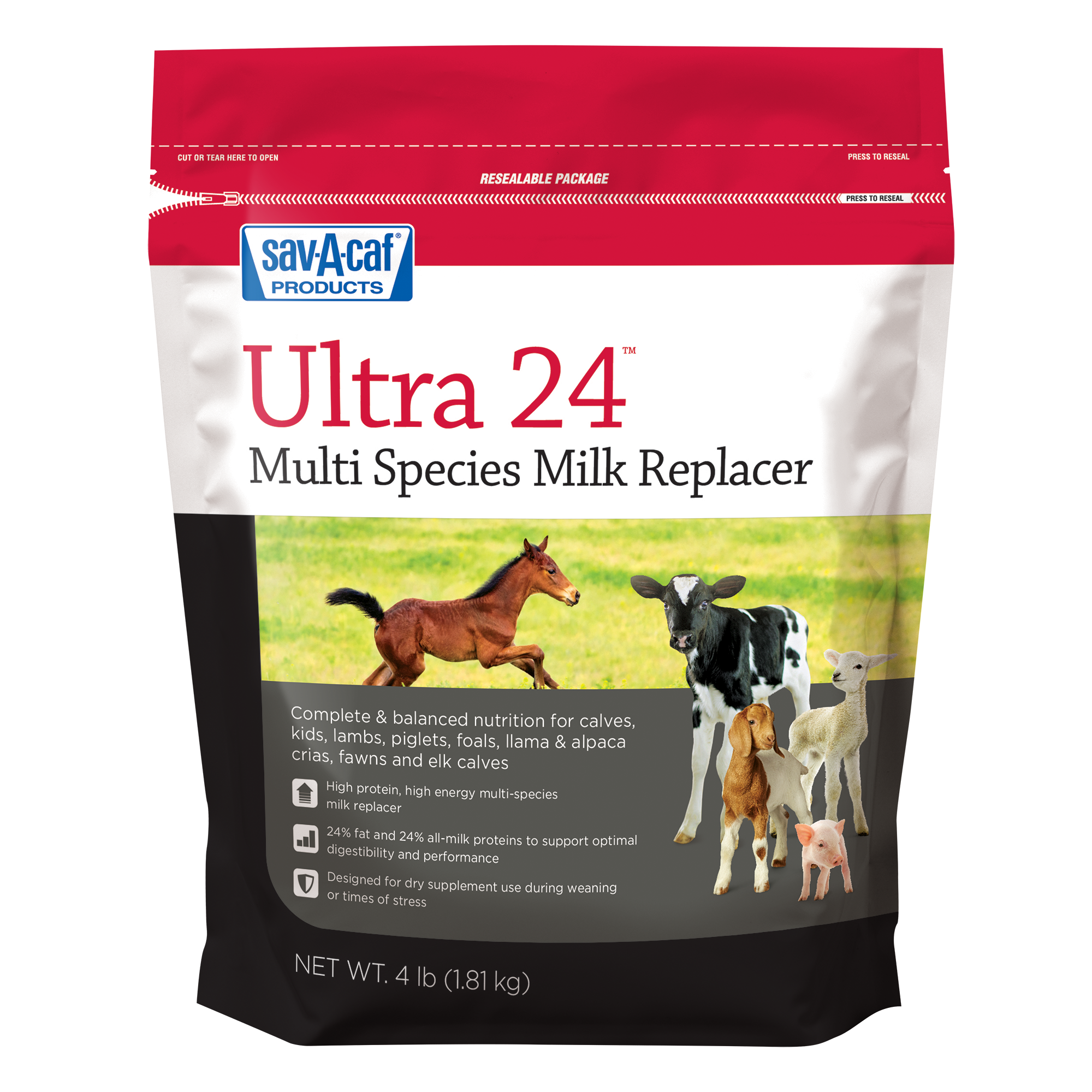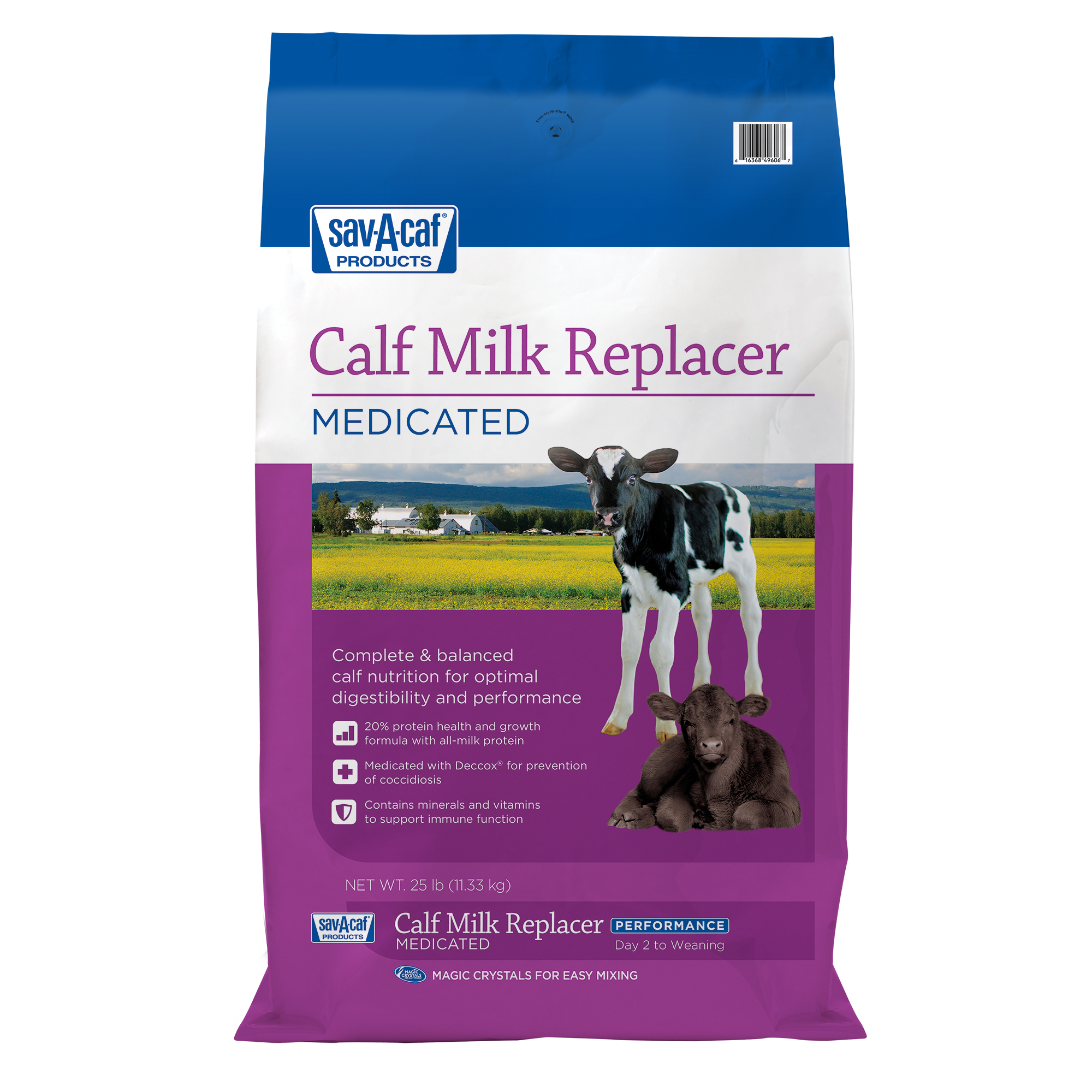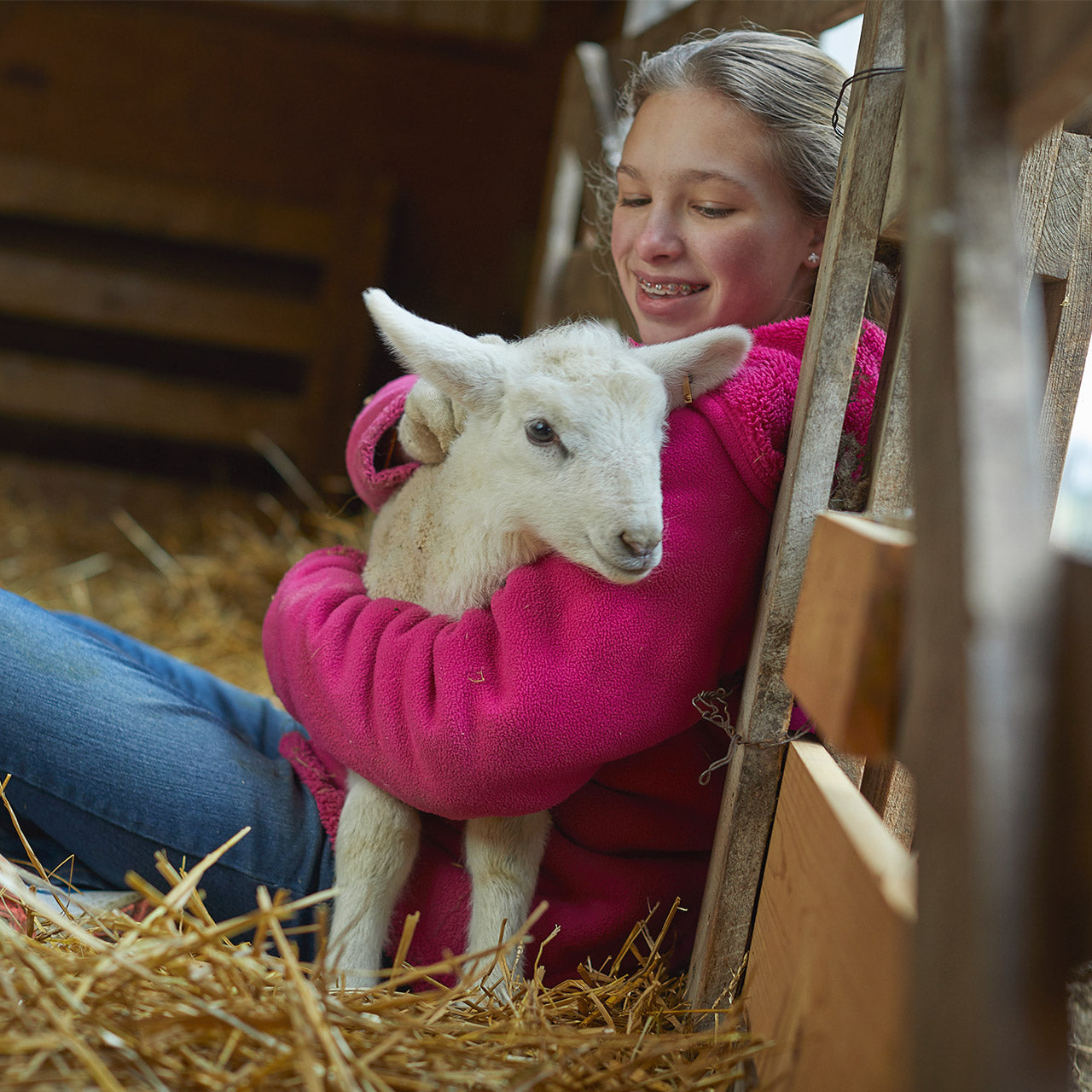
5 Ways to keep lambs healthy and happy in the winter
If you’re raising sheep in cold climates, winter is a time to take special precautions to ensure lambs grow healthy and strong.
Despite the lamb’s built-in wool blanket, winter can be stressful for young sheep. Sheep are most comfortable at 45-70 degrees Fahrenheit. When temperatures dip below this level, we need to do everything we can to make sure lambs stay healthy and perform.
Here are five tips to raising lambs when winter approaches on the farm:
1. Keep lambs out of cold, wet weather
Adult sheep are capable of enduring the outdoors during the thick of winter, but lambs are not. Young sheep need protection from the elements and bitterly cold temperatures.
House lambs in a well-ventilated structure free of direct drafts. Ventilation is important to keep lambs healthy and prevent illnesses like pneumonia. Fresh air reduces moisture, animal odors and gasses that can cause respiratory problems by diluting the barn’s air contaminants.
Consider opening windows, fans and inlets around the ceiling perimeter to allow fresh, cold air from the outside to mix with warm air before it reaches the lambs.
Lambs are hardy animals that can tolerate cold temperatures if they have plenty of dry, clean bedding. A thick layer of sawdust or shavings beneath the bedding can provide an extra layer of insulation.
2. Keep lambs fed properly
Nutritional requirements often increase during cold weather, especially if lambs become wet or are exposed to considerable wind. Typically, in temperatures below 32 degrees Fahrenheit, lambs demand additional energy to maintain normal body temperature.
Quality nutrition is a must to meet the high energy requirements of growing lambs in winter. These energy demands begin on day one.
Newborn lambs should receive colostrum, or a colostrum replacer specifically formulated for lambs, as soon after birth as possible.
Between two and four days of age, switch to a lamb milk replacer. Look for an all-milk protein formula containing at least 23% protein and 30% fat to provide your lambs with enough high energy to meet your performance goals.
Depending on the lamb’s age, you can supply more energy by adding in one additional feeding of lamb milk replacer per day and by feeding grain or dry hay.
To give lambs a boost, feed an electrolyte supplement that contains energy and amino acids to help replenish lost nutrients and fluids.
3. Watch for signs of hypothermia
Hypothermia can set in quickly during windy and wet conditions, even in mild temperatures.
A lamb with hypothermia will appear weak, gaunt, or hunched up and have a cold mouth and ears. Use a rectal thermometer to check its temperature.
A temperature below 100 degrees Fahrenheit is considered hypothermic. Feed warm colostrum or milk replacer to increase a hypothermic lamb’s body temperature.
When raising lambs, you can also warm lambs by placing them in a warming box until their temperature reaches 101 degrees Fahrenheit. A warming box is a confined space to keep lambs warm and dry. It can either be purchased or homemade.
A homemade warming box can be as simple as hair dryers blowing into dog crates or an insulated cooler with hot water bottles. Warming boxes are designed to provide constant, gentle heat rather than direct heat, which can cause overheating or hyperthermia i.e., above normal body temperature. Make sure to clean and sanitize the warming box regularly.
4. Don’t forget the water
Sheep still need water even when the weather turns cold. Growing lambs drink about 1-2 gallons of water per day, and adult sheep require 3 gallons of water daily.
Provide lambs and expectant ewes with plenty of fresh, clean water. Eating snow or licking ice in winter is not a suitable substitute for water.
Consider installing a tank heater in your water source to prevent the water from freezing.
5. Offer a clean, dry place for lambing
If you practice late-winter lambing, house ewes in a space that provides newborn lambs with a safe start to life.
Keep ewes close to lambing indoors to ensure they give birth in a dry, clean and draft-free environment.
Use warming lamps as an aid to dry off lambs. However, use lamps in moderation since overuse may lead to respiratory problems. Keep heat lamps away from hay, straw and excessive dust to help prevent fire.
Remember, sheep are most comfortable at 45-70 degrees Fahrenheit. Taking time to prepare for cold weather before it hits will help your lambs stay healthy and will allow them to keep growing during winter on the farm.
Get more lamb care tips by following along with My Farm Journey on Facebook and Instagram.
Find Solutions for Your Animals
-
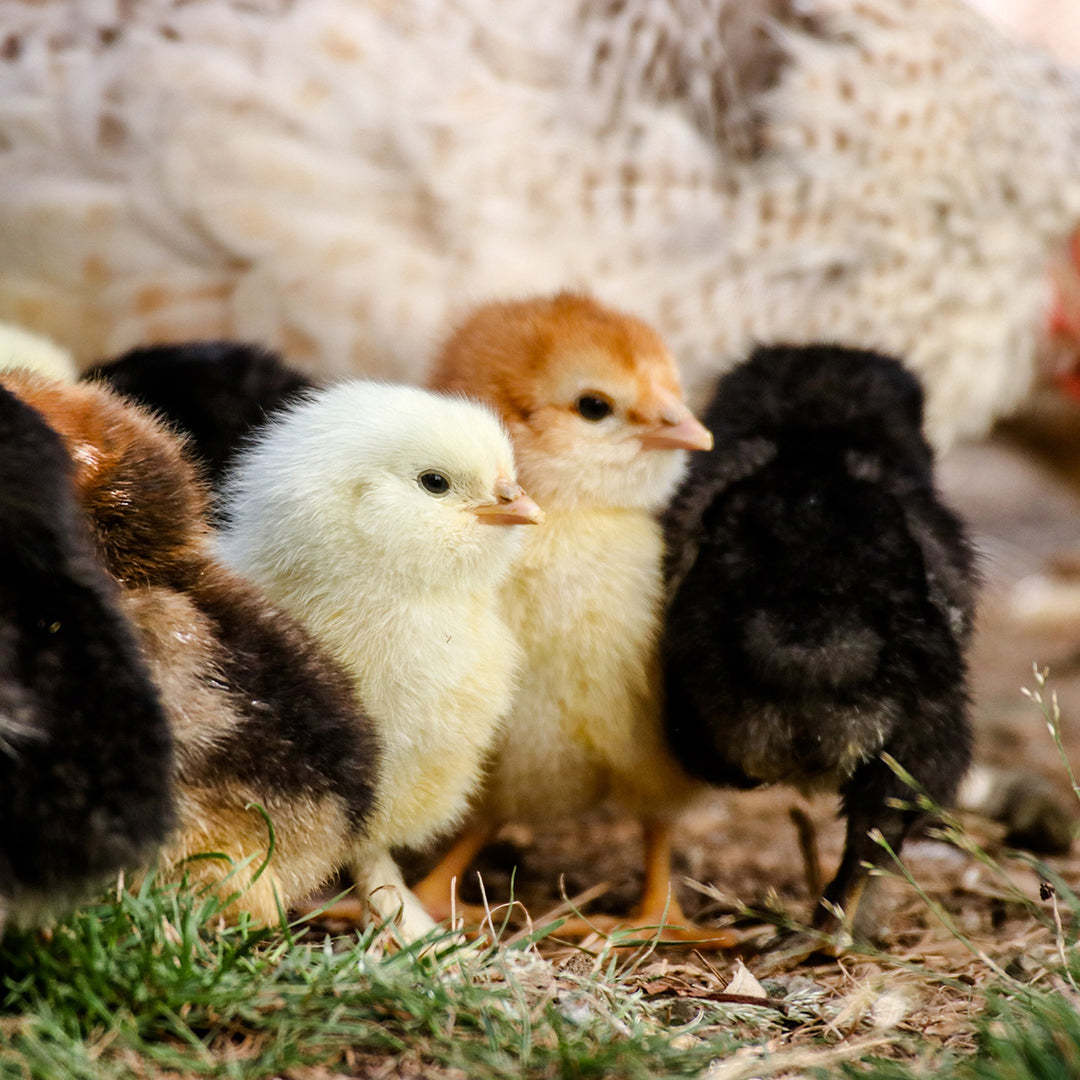
Whether housed in a coop or free ranging on your farm, your birds are exposed to multiple threats every day that could cause illness or impact their well-being. Now there’s a way to be more proactive with regular support for...
-
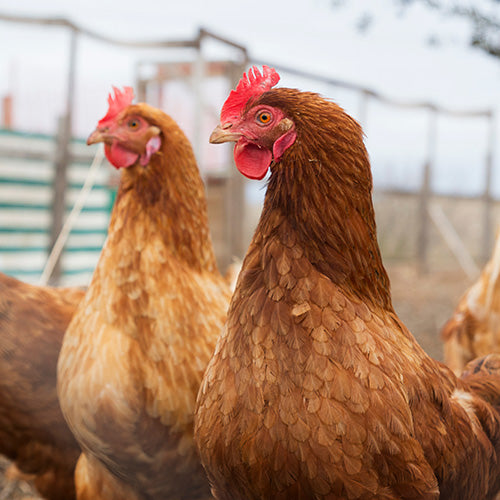
You’ve raised your chicks to adulthood and now they’re fully feathered hens. Way to go! Now, you get to enjoy their eggs and companionship for years to come. To maximize their life, support their production potential and kee...

